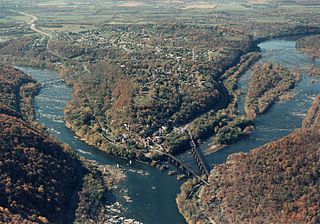
The Chipola River is a tributary of the Apalachicola River in western Florida. It is part of the ACF River Basin watershed.

A tributary or affluent is a stream or river that flows into a larger stream or main stem river or a lake. A tributary does not flow directly into a sea or ocean. Tributaries and the main stem river drain the surrounding drainage basin of its surface water and groundwater, leading the water out into an ocean.

The Apalachicola River is a river, approximately 112 mi (180 km) long in the state of Florida. The river's large watershed, known as the ACF River Basin, drains an area of approximately 19,500 square miles (50,505 km2) into the Gulf of Mexico. The distance to its farthest head waters in northeast Georgia is approximately 500 miles (800 km). Its name comes from the Apalachicola people, who used to live along the river.

Florida is the southernmost contiguous state in the United States. The state is bordered to the west by the Gulf of Mexico, to the northwest by Alabama, to the north by Georgia, to the east by the Atlantic Ocean, and to the south by the Straits of Florida. Florida is the 22nd-most extensive, the 3rd-most populous, and the 8th-most densely populated of the U.S. states. Jacksonville is the most populous municipality in the state and the largest city by area in the contiguous United States. The Miami metropolitan area is Florida's most populous urban area. Tallahassee is the state's capital.
Contents
The 92.5-mile-long (148.9 km) [1] river crosses present-day Jackson, Calhoun and Gulf counties.

Jackson County is a county located in the U.S. state of Florida, on its northwestern border with Alabama. As of the 2010 census, the population was 49,746. Its county seat is Marianna.

Calhoun County is a county located in the U.S. state of Florida. As of the 2010 census, the population was 14,625, making it the fifth-least populous county in Florida. Its county seat is Blountstown.

Gulf County is a county located in the panhandle of the U.S. state of Florida. As of the 2010 census, the population was 15,863. Its county seat is Port St. Joe.

The river flows through what is now preserved as the Dead Lakes State Recreation Area just before reaching its mouth at the confluence with the Apalachicola. The Dead Lakes were formed when the Apalachicola deposited sand bars blocking the mouth of the Chipola.

Dead Lakes State Recreation Area is a Florida protected area located 1 mile (1.6 km) north of Wewahitchka off Florida State Road 71 and southwest of Tallahassee. It was formerly a Florida State Park and originally a fish hatchery operated by the Florida Fish and Wildlife Conservation Commission from 1936 until 1951. Activities include hiking, fishing, boating, camping, and wildlife viewing. Among the wildlife of the park are foxes, cotton rats, raccoons, opossums, white-tailed deer, rabbits, skunk, beavers, turtles, snakes and alligators. A variety of trees can be found in the park, including longleaf pine, magnolia and bald cypress trees. Amenities include a boat ramp, fresh water trails, nature trails, and a camping area. The recreation area is open from 8:00 am until sunset year-round.
The Chipola River flows for several miles south from the Dead Lakes, parallel to the Apalachicola River, before reaching its confluence with the larger river.

In geography, a confluence occurs where two or more flowing bodies of water join together to form a single channel. A confluence can occur in several configurations: at the point where a tributary joins a larger river ; or where two streams meet to become the source of a river of a new name ; or where two separated channels of a river rejoin at the downstream end.














